Atri, home of black gold
Never imagine that hill towns in Abruzzo are all the same. That once you’ve seen one you’ve seen them all. Nothing is further from the truth.
There are borghi that meander crookedly along the crest of a hill, others that sit boldly astride it like a layered wedding cake. And others still that seem to defy gravity, clinging to the mountainside and looking, from a distance and especially after a snowfall, like a carefully assembled nativity scene.
Aside from topographical differences, each place has its own story to tell, its own treasure-trove of artistic and cultural gems. And none more so than Atri in the province of Teramo.
Atri dates back to pre-Roman times and is said by some to be the birthplace of the Emperor Hadrian. There are Roman remains, a theatre and a cathedral to visit. Being a hill town, it offers marvellous views. And last but not least, it is the home of the black gold, that is, liquorice.
The Cistern
We keep the liquorice until last. First we visit one of the oldest sites in Atri, a Roman cistern. We enter the cloister of the cathedral and descend stone steps just as people would have done in ancient times. This cistern, probably dating back to around the second century, provided the town with drinking water, which was channelled from underground springs.
Cistern is, for me, a necessary but unlovely word that conjures up nothing particularly attractive. So I am astonished and charmed when this cisterna turns out to be a vast underground chamber supported by robust pillars. Designed to hold 24 thousand cubic metres of water, it is an amazing example of Roman engineering.
The Duomo
We move on to the cathedral itself, dating back to 1223 and dedicated to Santa Maria Assunta. It has the typical squatty appearance of Abruzzo Romanesque, complete with rose window. It also has a sixteenth century campanile, perhaps one of the few earthquake-surviving bell-towers in the region. But what really distinguishes the Duomo of Atri is that it is blessed with a porta santa, a holy door.
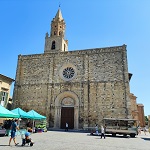

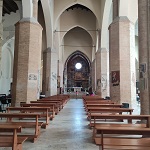
The very first door to be made a porta santa in the history of Christianity was in the basilica of Collemaggio in L’Aquila. Remember Celeste V? His name keeps cropping up. In the short time he was Pope he granted a similar privilege to Atri, his mother’s birthplace. The holy door, in the south wall of the cathedral, is opened on 15 August every year for the celebration of the Assumption of Mary.
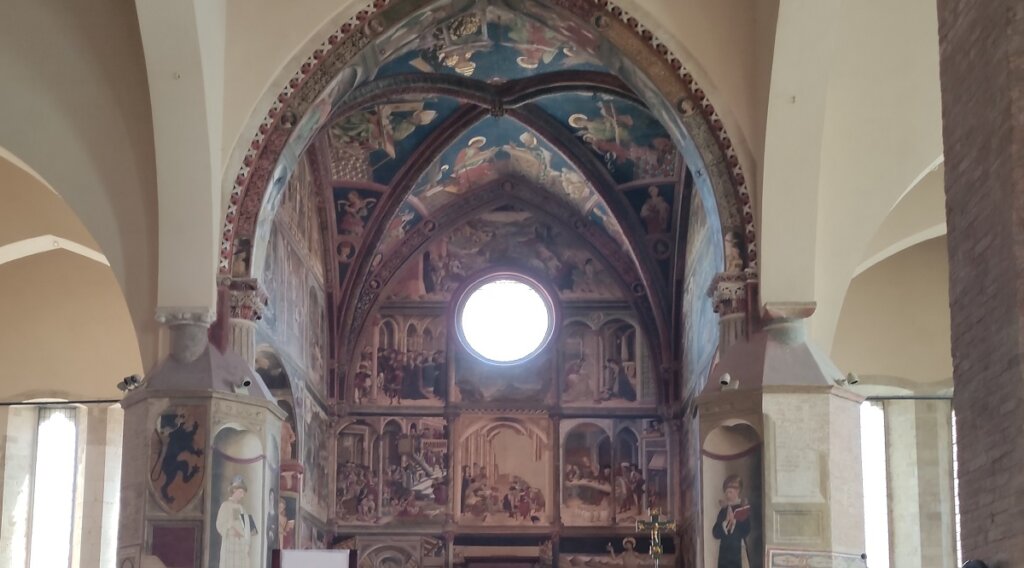
Inside the cathedral (actually, since 1986, a co-cathedral, i.e. of minor importance), among many treasures, we find frescoes depicting the life of Jesus, Roman mosaics observed giddily through a glass floor, and an intriguing thirteenth century fresco depicting the meeting between the living and the dead.
The Theatre
Across the square from the Duomo, in the place where a Jesuit church once stood, is the sombre, neoclassical façade of the theatre of Atri. The interior is jewel-box plush.
As I gaze around me at the three tiers of box seats, and the sumptuous scarlet stage curtain, I feel inadequately and inappropriately attired. If I close my eyes I am transported in my imagination to an evening in 1881, when the theatre was inaugurated. I would, of course, have arrived in a horse-drawn carriage, and alighted with the help of a gentleman with a tall hat and a silver-tipped cane. I would take his arm and, skirts swishing, thread my way through the waiting crowd and up the stairs. From our reserved box, I would exchange polite nods with other Atri bigwigs before settling back, with a flick of my fan, to enjoy Giuseppe Verdi’s Un ballo in Maschera.
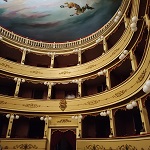
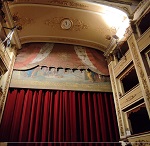
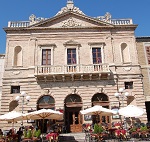
Reverie over, and ignoring for now the many signs advertising the liquorice of Atri, we amble along the main street. People are milling around doing their shopping or sitting at outdoor tables soaking up the morning sunshine.
The road rises and widens into another square, with on one side the Palazzo Ducale. Currently containing the municipal offices, this building has seen many transformations over the centuries. Here too was a Roman cistern and then, in the Middle Ages, a dungeon and torture chamber. The underground rooms in the palace are now used for exhibitions.
The road dips again as we reach the edge of town, where there is a temporary outdoor sculpture exhibition. Most of the exhibits seem to be torsos, stark against the azure August sky. Just over 400m below, the countryside rolls towards the Adriatic.
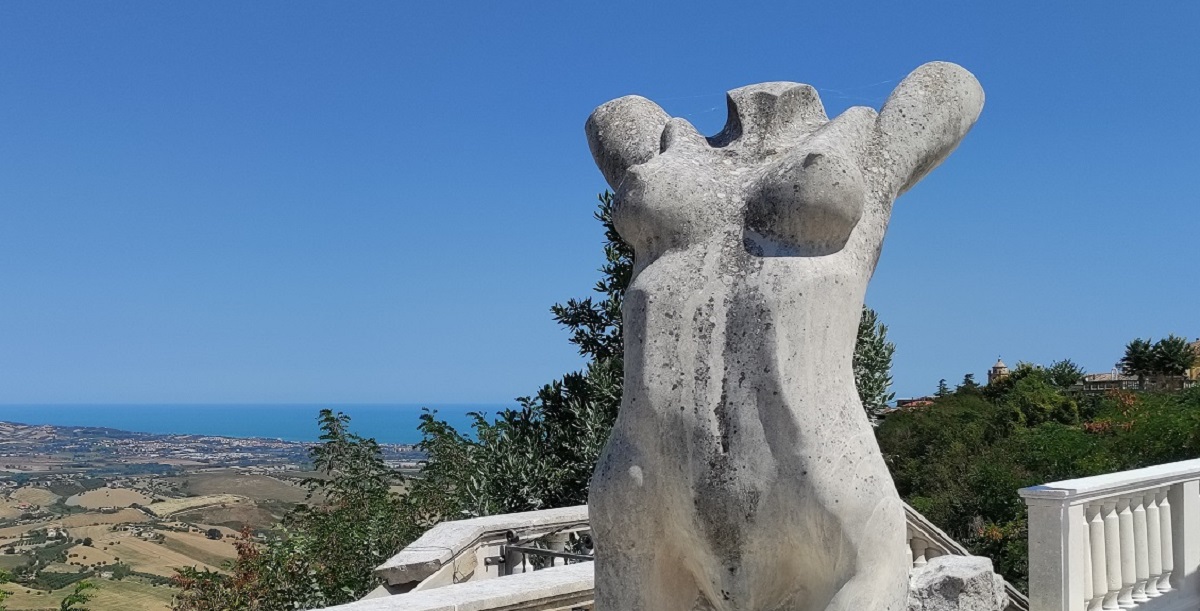
Black gold
It is time to try some liquorice, or black gold as some call it. On our way back through the town we nip inside a shop called, rather pompously: the liquorice boutique. All around there are boxes and tins and jars of the stuff. There are bundles of pure liquorice looking like firewood, and coloured pellets and slabs and wheels and logs. There are liquorice sweets that look like berries. As we taste the samples on offer, I do a little reading.
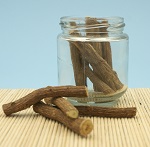
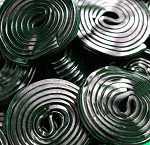

I learn that liquorice has been cultivated near Atri since Roman times and Abruzzo is now the second biggest producer in Italy after Calabria. During the middle ages the monks used to extract the juice from the root for medicinal purposes. Now there is a factory just outside Atri producing one of Italy’s favourite brands. Many Italians like to use pure liquorice as a breath freshener. It is also known as black gold.
It’s hard to choose but in the end I go for some honey-coated liquorice pellets. The honey offsets the strong aniseed taste. Pocketing our sweets, we step into the sunshine and head off to lunch.


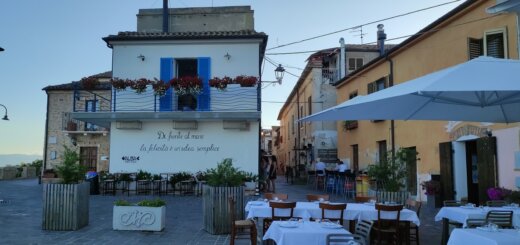
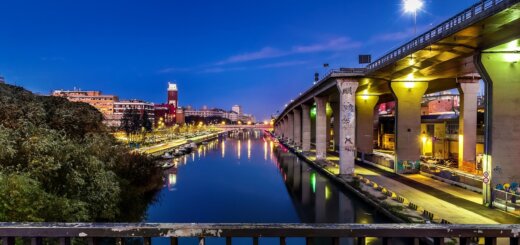


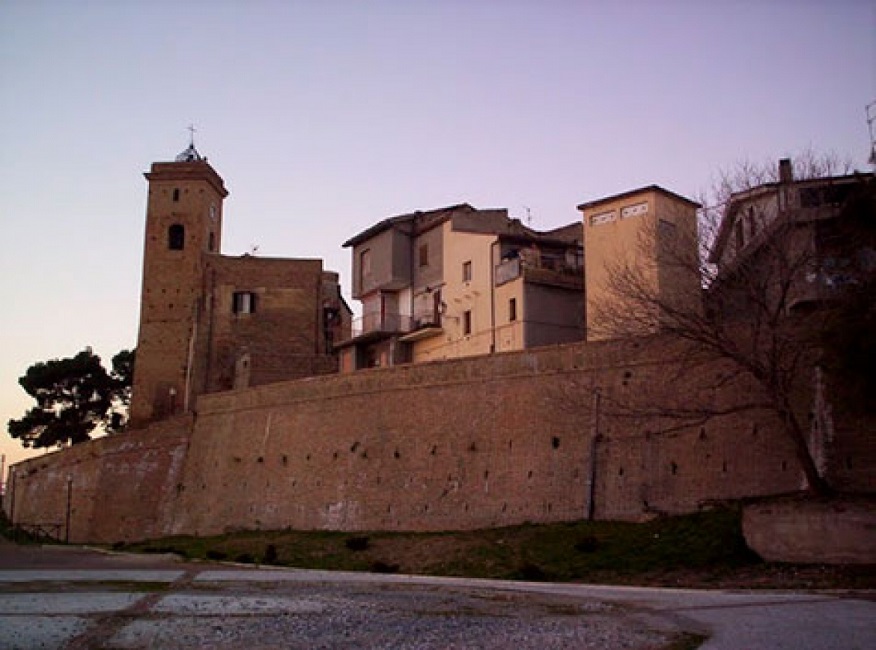
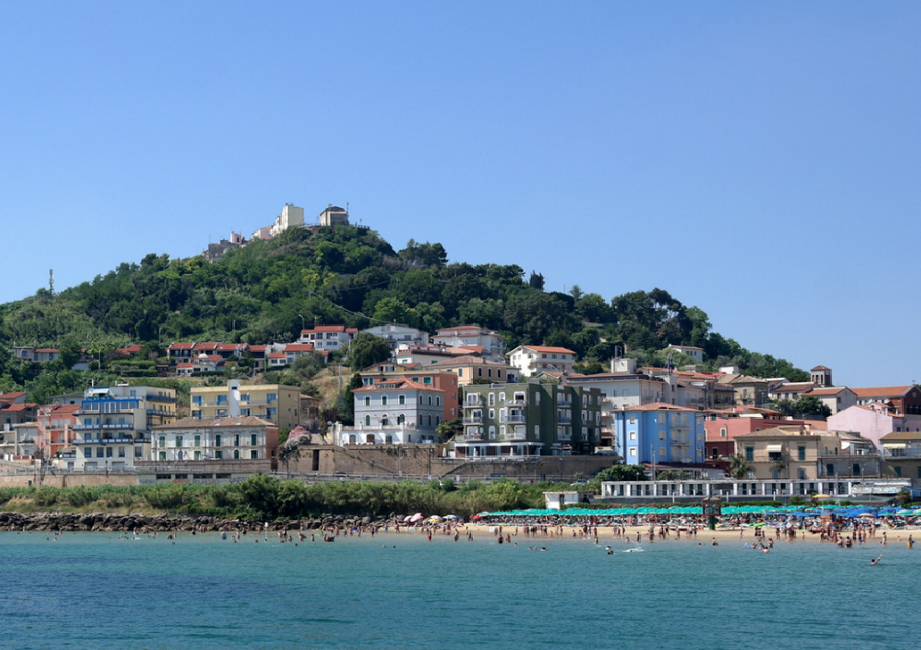

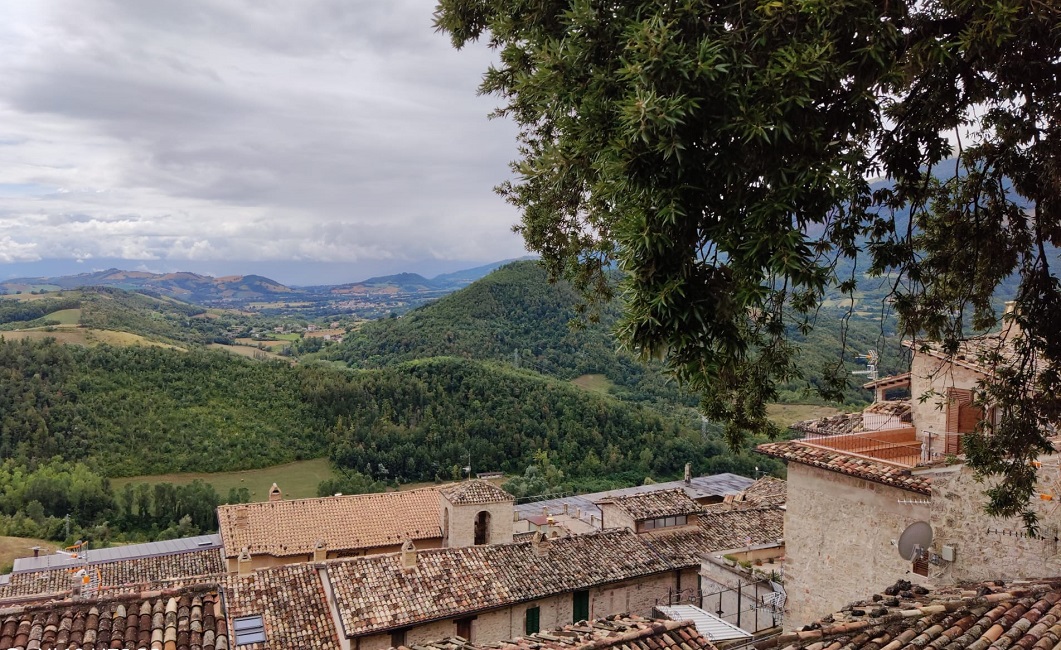
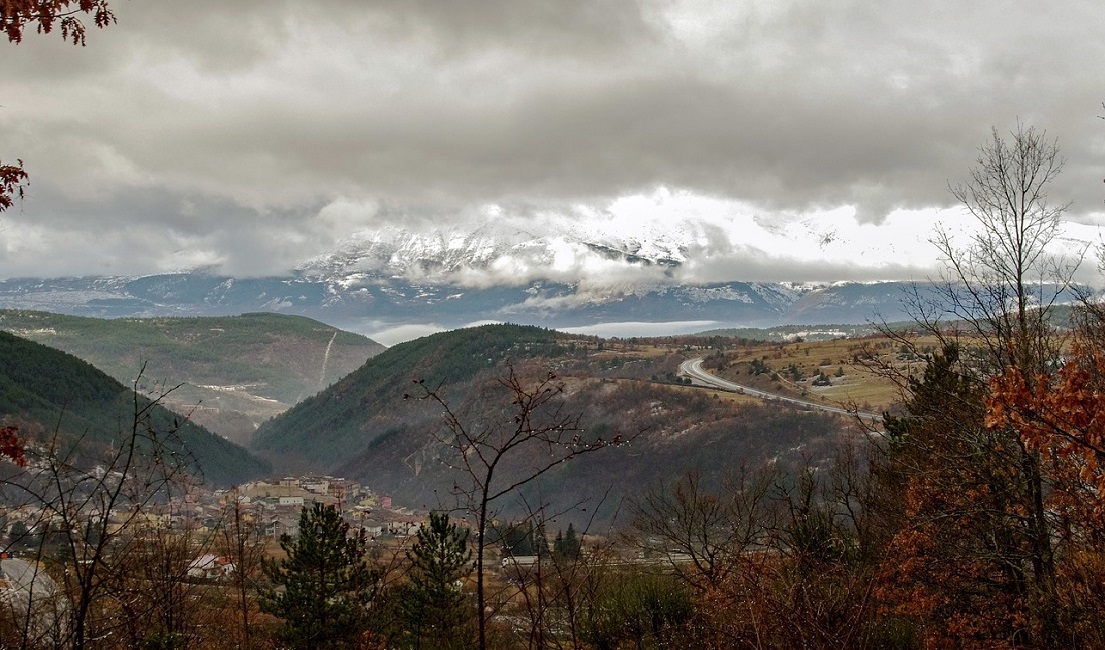

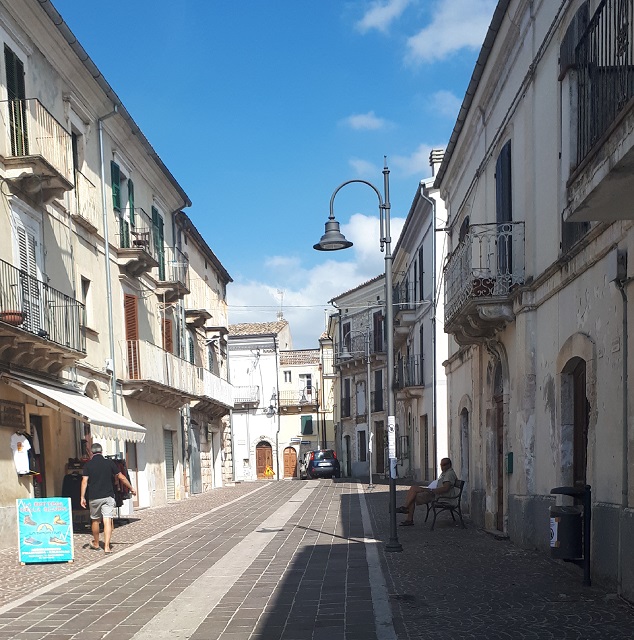
1 Response
[…] Atri, home of black gold […]